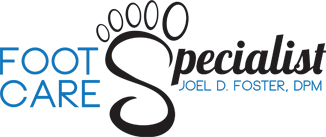 Hammer toes can significantly impact your mobility and quality of life. Fortunately, experienced Lee’s Summit podiatrist Dr. Joel Foster specializes in providing effective solutions to alleviate the discomfort of hammer toe and help you regain your stride. And, since Dr. Foster’s office utilizes a direct-pay model that puts decision-making back in the hands of the patient, you’ll be able to choose the treatment that is most effective for your unique needs instead of worrying about the limitations of your insurance coverage.
Hammer toes can significantly impact your mobility and quality of life. Fortunately, experienced Lee’s Summit podiatrist Dr. Joel Foster specializes in providing effective solutions to alleviate the discomfort of hammer toe and help you regain your stride. And, since Dr. Foster’s office utilizes a direct-pay model that puts decision-making back in the hands of the patient, you’ll be able to choose the treatment that is most effective for your unique needs instead of worrying about the limitations of your insurance coverage.
Causes of Hammer Toe
A hammer toe is a common foot condition characterized by an abnormal bending of the toes. The development of a hammer toe is typically attributed to a combination of factors that affect the muscles, tendons, and bones of the feet.
- Muscle imbalance. If the muscles on one side of the toe become stronger or tighter than the opposing muscles, it can cause the toe to bend unnaturally and remain in that position.
- Genetics. If your family has a history of foot deformities or conditions like hammer toe, you might be more prone to developing it as well.
- Age. As we age, the muscles and ligaments in our feet may weaken and lose elasticity. This can lead to imbalances and deformities, including hammer toe.
- Foot structure. The shape of your feet can contribute to the development of hammer toes. People with a high arch or a second toe that is longer than the big toe (known as "Morton's toe") are more susceptible to this condition.
- Footwear choices. Wearing shoes that are too tight, narrow, or have a pointed toe box can force the toes into unnatural positions. This constant pressure and friction can lead to the development of hammer toe over time.
- Toe trauma. A history of toe injuries, such as stubbing your toe or dropping heavy objects on it, can lead to the development of hammer toe deformities.
- Underlying conditions. Certain medical conditions, such as arthritis and diabetes, can contribute to the development of hammer toes.
- Neuromuscular disorders. Conditions that affect nerve and muscle function, such as cerebral palsy or Charcot-Marie-Tooth disease, can contribute to the development of a hammer toe due to muscle imbalances.
Symptoms of Hammer Toe
Recognizing these symptoms is crucial in seeking timely treatment for hammer toe.
- Toe deformity. The abnormal bending of one or more toes at any of the joints can cause the affected toe to curve or bend into an unnatural position.
- Pain and discomfort. Hammer toe can cause pain and discomfort, especially when wearing shoes or walking.
- Joint stiffness. Hammer toes can cause stiffness in the affected joint or joints, making it difficult to move the toe smoothly and comfortably.
- Inflammation and swelling. The constant friction between the bent toe and your shoes can lead to inflammation and swelling around the affected joint.
- Redness. Irritation from the rubbing and pressure can cause redness and soreness on and around the affected toe.
- Corns and calluses. The bent toe may come into contact with the inside of your shoes, leading to the formation of corns and calluses.
- Difficulty finding proper footwear. Finding shoes that fit comfortably can become challenging due to the altered shape of the affected toes.
- Limited range of motion. As the toe becomes progressively more bent, its flexibility can be compromised. This limited range of motion can affect your ability to move the toe comfortably and may impact your balance while walking.
Diagnosing Hammer Toe
To diagnose hammer toe, Dr. Joel Foster will examine your foot and toe to assess the extent of the deformity and evaluate muscle strength. He’ll also ask about your medical history to identify factors contributing to your condition.
In most cases, Dr. Foster will recommend X-ray imaging. X-rays provide detailed images of the bones and joints. This is necessary to determine the severity of the condition and assist in planning appropriate treatment.
Treating Hammer Toe
Wearing well-fitting shoes with a roomy toe box can alleviate discomfort and prevent further progression of hammer toe. Custom orthotics may also be useful in helping to manage your pain. However, your contracted toe will only continue to get worse without treatment that addresses the underlying imbalance and misalignment.
Traditional hammer toe surgery uses either joint resection or fusion to straighten the toe. However, Dr. Foster offers minimally invasive options that avoid joint fusion, joint resection, and hardware. This reduces the risk of complications while allowing for less pain and a faster recovery than open surgery.
Schedule Your Appointment With Lee’s Summit Podiatrist Dr. Joel Foster Today
When it comes to taking each step in life with confidence and comfort, healthy feet play a pivotal role. To schedule an appointment with Dr. Joel Foster to discuss your hammer toe treatment options, contact us online or give us a call at (816) 246-4222.
